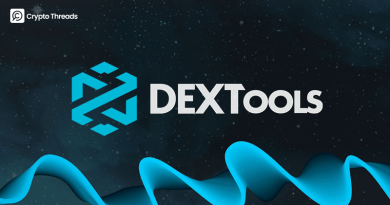What is Bitcoin? A Complete Beginner’s Guide
Key Takeaways:
- Bitcoin is more than speculation — it is the foundation of digital money.
- Scarcity is built in, with only 21 million coins ever to exist.
- Security and decentralization make the network exceptionally resilient.
- Adoption now spans individuals, corporations, institutions, and governments.
What’s Bitcoin? Launched in 2009 as an experiment in digital cash, it has grown into a trillion-dollar asset at the center of global finance. Over15 years it has sparked headlines, divided economists, and created fortunes. Supporters see it as proof that money can exist outside banks and governments. Critics point to volatility and sharp price swings. Yet through every crash and recovery, the network has expanded and strengthened, showing resilience unlike anything before in modern finance.
This guide explores Bitcoin’s origins, how it functions, and why it continues to shape the future of money.
What is Bitcoin?
Bitcoin was launched in 2009 as the world’s first decentralized digital currency. It was built to let people exchange value directly, without the need for banks or middlemen. Every transaction is recorded on the blockchain, a public ledger maintained by thousands of independent computers worldwide. This system makes Bitcoin transparent, secure, and resistant to control by any single authority. Instead of trusting institutions, users rely on open code and a global network that validates transactions around the clock.
What sets it apart is its design. The total supply is capped at 21 million coins, creating digital scarcity that mirrors precious metals like gold. This limited supply, combined with its portability and divisibility, has shaped how people use it. For some, Bitcoin is a faster way to send money across borders; for others, it has become digital gold, a tool to preserve wealth and hedge against inflation in uncertain times.
Satoshi Nakamoto – Father of Bitcoin

The father of Bitcoin is Satoshi Nakamoto – a pseudonymous developer that is now still one of technology’s greatest mysteries. In October 2008, Nakamoto published a nine-page whitepaper outlining “a peer-to-peer electronic cash system.” Three months later, the first block of the Bitcoin network, the Genesis Block, was mined, embedding a message about bank bailouts during the financial crisis. Nakamoto stayed in contact with early developers for a short time, then vanished in 2011. Their identity has never been confirmed. This disappearance only deepened Bitcoin’s mythology: its creator stepped away, yet the network kept growing, proving it could thrive without a leader
Historical Timeline

The history of Bitcoin is filled with defining moments that pushed it from obscurity into the global spotlight. Each step shows how a simple idea grew into a financial force recognized worldwide.
- 2008–2009: Satoshi Nakamoto publishes the Bitcoin whitepaper and launches the Genesis Block, planting the seed for decentralized money.
- 2010: Laszlo Hanyecz buys two pizzas for 10,000 BTC, the first real-world purchase and proof that Bitcoin can function as currency.
- 2013: BTC’s price crosses $1,000, drawing global media attention and sparking wider curiosity.
- 2014: The collapse of Mt. Gox, then the largest exchange, shakes the market but leads to stronger and more secure infrastructure.
- 2017: Its surges to $20,000, marking its entry into mainstream consciousness and mass adoption.
- 2021: El Salvador becomes the first nation to declare Bitcoin legal tender, a bold experiment in national policy.
- 2024: U.S. approval of spot BITC ETFs opens the doors to institutional investment at scale.
- 2025: Governments and corporations worldwide begin holding Bitcoin in reserves, cementing its role in global finance.
How does Bitcoin work?
Bitcoin operates on the blockchain, a distributed ledger that records every transaction ever made. Instead of relying on a central database, the blockchain is maintained by thousands of independent computers around the world. Transactions are bundled into blocks, which are linked together in sequence to form a permanent and transparent record. Once written, the data cannot be changed without rewriting every block that came after it, something practically impossible given the scale of the network.

The process of adding new blocks is called mining. Miners use powerful computers to solve complex mathematical puzzles. The first miner to solve the puzzle wins the right to add the block to the chain. In return, they receive a block reward, newly issued Bitcoin, plus transaction fees paid by users. This mechanism, known as Proof of Work, ensures that every block represents real computational effort, making the network extremely hard to attack.
Another key feature is its limited supply. Only 21 million coins will ever exist. New coins are introduced gradually through mining rewards, but the rate of issuance slows over time. Roughly every four years, the block reward is cut in half in an event known as the halving. This process mirrors the extraction of scarce resources like gold, reinforcing Bitcoin’s reputation as “digital gold.”
Beyond miners, Bitcoin’s security and fairness are upheld by nodes — computers that independently verify transactions and enforce the rules of the system. Nodes reject any invalid transactions, ensuring that no one can cheat or spend coins they don’t own. With miners providing security and nodes enforcing the rules, Bitcoin remains decentralized, censorship-resistant, and open to anyone with an internet connection.
Together, blockchain, mining, and decentralization form the engine of Bitcoin: a system that has run continuously, block by block, without interruption since 2009.
Key Features of Bitcoin
What makes Bitcoin remarkable is the way it blends economic principles with cutting-edge technology. This combination has allowed it to endure market crashes, regulatory battles, and constant skepticism for more than fifteen years. Each feature reinforces its value, making it a trusted option for both everyday users and long-term investors.
- Scarcity: Bitcoin’s supply is permanently capped at 21 million coins. This fixed limit creates digital scarcity, making it resistant to inflation in a way fiat currencies cannot match.
- Decentralization: The network is not controlled by any government or corporation. Instead, it is maintained by thousands of miners and nodes spread across the globe, ensuring no single point of failure.
- Security: Transactions are secured through Proof of Work and advanced cryptography, making the blockchain nearly impossible to alter. Despite countless attacks on exchanges, the core Bitcoin network itself has never been compromised.
- Transparency: Every transaction is recorded on the blockchain and can be verified by anyone. This openness builds trust, as the ledger is public and permanent.
- Divisibility: One Bitcoin can be divided into 100 million satoshis, allowing transactions of any size, from large international transfers to micro-payments.
- Portability: As a digital asset, Bitcoin moves across borders in minutes, without the friction of traditional banking systems.
- Resilience: The network has run nonstop since 2009, demonstrating unmatched reliability compared to many financial systems that suffer downtime or interruptions.
What Do People Use Bitcoin For?
Bitcoin started as an experiment, but today it serves real purposes across society, from individuals protecting their savings to governments reshaping economic policy. Its flexibility has allowed it to find roles in finance, business, and even national strategy.
- Store of Value: Often called digital gold, Bitcoin attracts those looking to preserve wealth. Its fixed supply makes it a popular hedge against inflation, especially in economies where currencies lose value quickly.
- Payments: Bitcoin enables fast, borderless transfers. Migrant workers send remittances to families abroad at lower fees, while online merchants accept BTC for goods and services without relying on banks.
- Corporate Treasury: Businesses increasingly hold Bitcoin on their balance sheets. For companies, it serves as both a reserve asset and a way to diversify against fiat risk.
- Institutional Investment: ETFs, futures, and funds make Bitcoin accessible to pension funds, hedge funds, and traditional investors. This institutional adoption has brought credibility and large-scale liquidity to the market.
- National Strategy: El Salvador famously adopted Bitcoin as legal tender in 2021, encouraging its use for payments, remittances, and economic growth. Other nations monitor closely, exploring how Bitcoin could fit into their own financial systems.
- Technology Layer: The Lightning Network extends Bitcoin’s utility by enabling instant, low-cost transactions. This makes small, everyday payments practical and positions Bitcoin as more than a store of value.
Bitcoin vs Other Cryptocurrencies
After Bitcoin came thousands of new cryptocurrencies, each with its own purpose. Ethereum brought smart contracts and decentralized apps. Solana pushed for speed and low fees. These projects show the range of what blockchain can do. Even so, Bitcoin remains the standard: the first, the most secure, and the most widely recognized. The table below highlights the differences.
| Feature | Bitcoin (BTC) | Ethereum (ETH) | Solana (SOL) |
| Launch Year | 2009 | 2015 | 2020 |
| Main Role | Digital money, store of value | Smart contracts, DeFi, NFTs | High-speed apps and transactions |
| Consensus | Proof of Work | Proof of Stake | Proof of History + PoS |
| Transactions/sec | ~7 | ~30 (higher with Layer 2) | 2,000+ (with some instability) |
| Supply Policy | Fixed at 21 million | Elastic, with burn reducing inflation | Inflationary, no hard cap |
| Core Strength | Scarcity, security, resilience | Flexibility, ecosystem of applications | Speed, scalability, low fees |
Bitcoin stands as the most stable and predictable of the three. Its rules are simple, its supply fixed, and its focus clear: to be money that cannot be inflated or controlled. This reliability, combined with proven security, makes it the asset people turn to when they want certainty. Ethereum and Solana move fast, experimenting with applications, governance models, and scaling solutions. That pace brings innovation but also frequent change and occasional instability.
For investors and users, the difference is clear. Bitcoin is the anchor of the crypto economy, the benchmark against which all other digital assets are measured. Ethereum and Solana may lead in building ecosystems of apps and services, but Bitcoin holds the role of digital gold: scarce, secure, and universally recognized. Its resilience through every market cycle cements its position as the foundation on which the rest of the industry grows.
FAQs
Is Bitcoin safe?
The Bitcoin blockchain has never been hacked, but users face risks if they leave funds on exchanges or use weak security. Using non-custodial wallets and keeping private keys safe is the best protection.
Who controls Bitcoin?
No one. Bitcoin is open-source software, run by miners and nodes worldwide. Rules are enforced through decentralized consensus, not by a central authority.
Can governments ban Bitcoin?
Governments can regulate or restrict access to exchanges, yet the decentralized network keeps running anywhere with internet access.
How many Bitcoins will exist?
Only 21 million will ever be created. New supply halves roughly every four years until the last fraction is mined around 2140.
Is Bitcoin anonymous?
It is pseudonymous. Transactions are public on the blockchain and linked to wallet addresses, which can sometimes be traced to individuals.
Why does Bitcoin use energy?
Mining consumes electricity to secure the network, but more operations now use renewable or wasted energy, reducing its environmental impact.
How do I buy Bitcoin?
People usually purchase through crypto exchanges, payment apps, or Bitcoin ATMs, then transfer coins to secure wallets.
Can I lose my Bitcoin?
Yes. Losing private keys means permanent loss of funds, which is why careful storage, especially with hardware wallets, is critical.
Conclusion
Bitcoin began as a radical experiment and has become a cornerstone of global finance. Scarcity, security, and decentralization have carried it through every crisis and earned the trust of people, corporations, institutions, and governments. The network keeps advancing, with halvings tightening supply, new technologies expanding use, and adoption spreading worldwide.
Today Bitcoin stands as digital gold, a financial rail for global settlement, and a reserve asset for the digital age. It has already changed how the world defines money, and its influence is only set to grow. Beyond price movements and market cycles, Bitcoin represents a shift in power: from centralized institutions to individuals, from inflation-prone currencies to a scarce, transparent system. Each year it gains new believers, from ordinary savers to national policymakers. Its story is still unfolding, but the direction is clear, Bitcoin is no longer just an experiment; it is a force reshaping the future of money.



